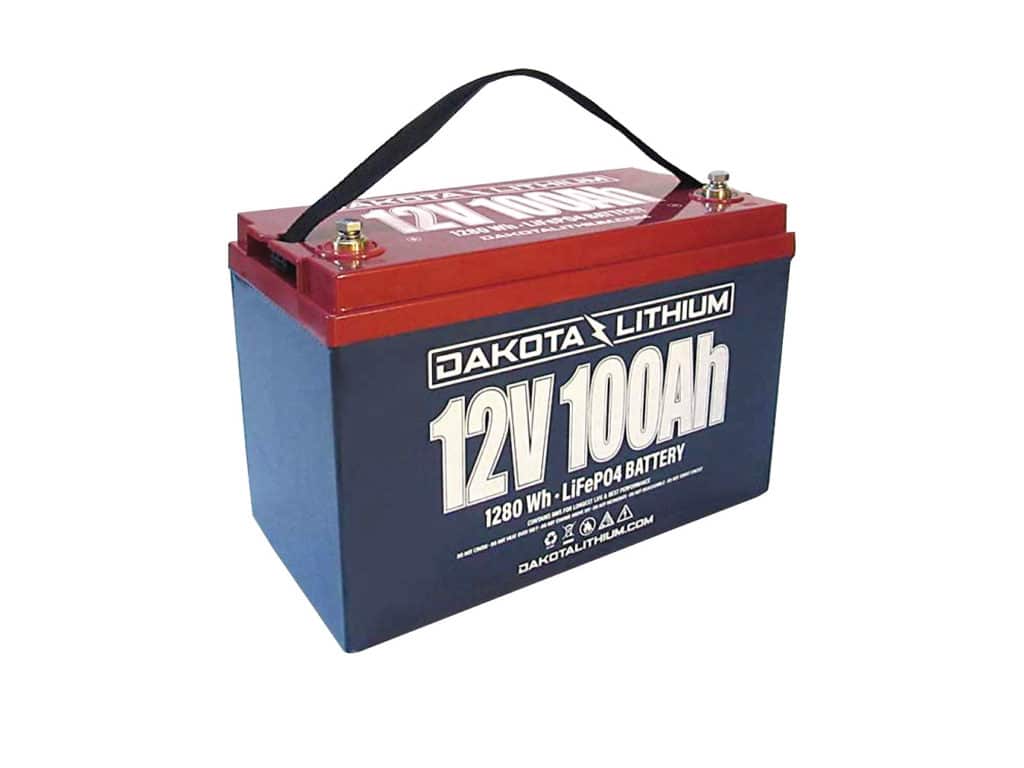
If anybody could justify a battery that exceeds the total cost of a boat and motor, it’s me. My used 14-foot aluminum boat and new Minn Kota 55-pound-thrust trolling motor set me back about $500, and with the addition of a $125 Group 31 SuperStart 12-volt deep-cycle lead-acid battery, I was ready to fish.
The battery is my boat’s de facto fuel tank, determining how far I can travel, how long I can fish, and whether I’ll be able to make it home if the wind cranks up.
My power demands made upgrading to a Dakota Lithium 12-volt 100 Ah battery more reasonable. This 100 Ah-rated lithium-iron-phosphate (LiFePO4) battery retails for $899 (including charger). Would the difference be justified when compared to my 98 Ah lead-acid model?
Losing Weight
Because I store my boat onshore and take everything home with me, each fishing trip means lugging the battery in and out of the boat. I was accustomed to performing this task with a 59.7-pound battery. The Dakota Lithium 100 Ah weighs in at 31.9 pounds.
The Numbers
If both batteries are rated at 100 Ah, how can lithium batteries deliver twice the run time? With lead-acid batteries, voltage drops steeply as the battery is used, resulting in reduced power to the motor. If the voltage drops to around 50 percent, the motor can stop working, even if there is still juice left. Lithium batteries have a flat voltage curve, delivering steady voltage for 99 percent of the charge.
My trolling motor draws about 50 amps at full blast, although this is something I do only for short periods of time. I typically spend about three to three and a half hours trolling at 35 to 40 percent of maximum speed, where my motor draws about 18 to 20 amps. I’ll typically run another 15 minutes at full speed and 15 minutes maneuvering at the lowest speed settings.
With my lead-acid battery, motor performance would start to drop noticeably over the last hour of the trip. Sometimes, I would figuratively limp home with the motor pegged. I’ve yet to notice any decrease in performance during a lithium-powered fishing day.
Read Next: Boat Battery-Monitor Gauges Compared
Lithium might cost more, but it provides a much longer life span. (Dakota Lithium provides an 11-year warranty.) A lithium marine deep-cycle battery can handle up to 5,000 charge and discharge cycles. Life expectancy for a typical lead-acid marine battery is 200 to 300 cycles—far less if you regularly discharge the battery below 50 percent of its rated capacity.
Lithium Caveats
Besides the higher initial cost, there are some caveats. Because lithium batteries deliver full power up until the end, they can stop cold without warning. This makes it important to understand your battery’s state of charge. If your trolling motor doesn’t have a built-in battery monitor, consider an aftermarket monitoring system. Some lithium batteries have Bluetooth to monitor state of charge on a mobile app.
Finally, there’s that bad rap lithium batteries have gotten for catching on fire or exploding. Batteries using LiFePO4 chemistry don’t contain rare earth elements and won’t do that. Top lithium brands also feature built-in battery-management-system microchips to protect against overheating, overcharging and short-circuiting.








